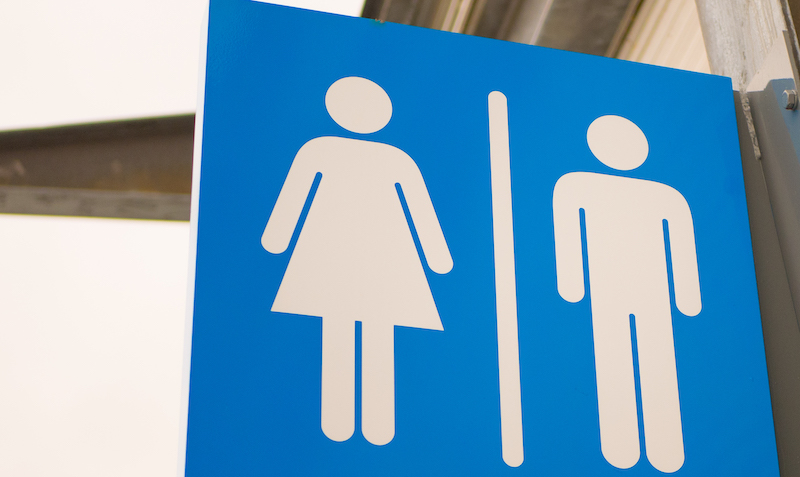
Scholar urges new regulatory frameworks for recognizing nonbinary individuals under the law.
In a memo recently leaked to The New York Times, the U.S. Department of Health and Human Services reportedly proposed that gender be determined “on a biological basis that is clear, grounded in science, objective and administrable.” This proposed universal definition of gender would be a binary one: either male or female, based solely on genitalia.
Backlash to the proposal erupted, and over 1,600 scientists have since signed an open letter arguing that the proposal is “fundamentally inconsistent not only with science, but also with ethical practices, human rights, and basic dignity.”
Instead of viewing gender as binary—and thus stripping nonbinary, transgender, and intersex individuals of their human rights and dignity—Jessica Clarke, professor at Vanderbilt University Law School, argues that the law can actually recognize nonbinary gender identities or, alternatively, abolish unnecessary sex classifications altogether.
In a forthcoming article in the Harvard Law Review, Clarke identifies three possible regulatory schemes under United States civil rights law to address the rights of nonbinary individuals: sex neutrality, third gender recognition, and thoughtful integration.
The first regulatory scheme, sex neutrality, would involve getting rid of what Clarke calls “unnecessary sex classifications by government.” Rather than “mandate androgyny,” this scheme, Clarke clarifies, would remove rules that “require people to choose the ‘male’ or ‘female’ category, when those rules do not serve important interests,” such as when designating single-user restrooms as male and female.
Because their gender presentation may not match the norm of people seen in either a men’s or women’s restroom, many nonbinary individuals avoid using public restrooms. Clarke suggests phasing out gendered restrooms and replacing them with “spaces that provide safety and privacy for each individual.” Clarke acknowledges that this would not only require legal and architectural changes, but social change as well. Although that seems like a monumental task, Clarke argues that the challenge of change does not justify disregarding nonbinary gender altogether.
“Stop-gap” measures currently exist, like family restrooms and allowing people to use the gendered facility they feel most comfortable using. The “ideal solution,” according to Clarke, would involve removing the gendered classifications of restrooms and making them “all gender,” with “fully enclosed private stalls and larger, open, public spaces that would better ensure safety.”
Clarke’s second proposed regulatory scheme, third gender recognition, would provide a third gender category—in addition to male and female—to “protect people with nonbinary gender identities and to express that they deserve the same respect as men and women.” Clarke explains that this scheme would shield individuals from harassment by government officials—like being questioned when their outward appearance does not match the binary marker with which they are identified—by allowing their identification documents to match their “self-reported” gender identity.
Law enforcement does not need binary sex markers to identify people, provide emergency response, or track crimes, asserts Clarke. One argument for binary sex markers says that criminals may change their sex marker to elude law enforcement—so their name will not appear in a crime database. Clarke counters by explaining that the U.S. Department of State already allows sex marker corrections and, moreover, many countries—like Canada and New Zealand—have instituted non-binary markers without identity fraud issue. Even more damning to this “fraud” argument, the United States already accepts individuals from these countries whose passports contain nonbinary markers.
Many benefits exist to adopting a third gender recognition, at least in the context of identification. Allowing a third gender recognition could alleviate “friction” between nonbinary individuals and police, customs, and the Transportation Security Administration when the person’s outward appearance does not reflect the sex marker on that person’s identifying document. In addition, recognition could “legitimate” a person’s identity and potentially “undermine discrimination by delegitimizing arguments that nonbinary identity is not real or valid.”
In the United States, California—in addition to Oregon and six other states—took steps toward this third gender regulatory scheme when it passed California’s Gender Recognition Act. The Act authorizes the “change of gender on a new birth certificate to be female, male, or nonbinary.”
The final regulatory scheme proposed by Clarke—integration—would “redefine binary sex and gender categories” to fit the aim and purpose of individual regulations, while also ensuring respect for every person’s gender identity. This approach would integrate nonbinary people into binary categories depending on the specific interest being served, such as in sex-segregated prison housing.
Although neutrality would be worth considering in prison housing, integration of nonbinary individuals into the binary classification scheme may attempt to provide the “safest and most affirming” placement for nonbinary individuals. Between 2012 and 2018, the federal approach to determining prison housing for transgender and intersex inmates involved a screening process on a case-by-case basis to determine their best placement. Facilities screened all individuals for their risk of “perpetrating or experiencing sexual abuse,” which they then used to integrate the inmate into the sex-segregated housing that fit their risk. Clarke notes that nonbinary individuals were “assimilated” into prisons, and did not actually present an “insurmountable challenge to sex-classification.”
Unfortunately, in 2017 the Trump Administration revised the federal prison policy of allowing “housing by gender identity,” and replaced it with one that uses “biological sex as the initial determination” for housing of gender nonconforming inmates.
Although Clarke admits that none of the three regulatory schemes for addressing nonbinary gender issues—neutrality, third gender recognition, and integration—will prove the “best fit” for every situation, she argues that they are not mutually exclusive and can be used in tandem.
“Nonbinary gender poses challenges to legal interests,” Clarke concludes, “but these challenges are not insurmountable.”



